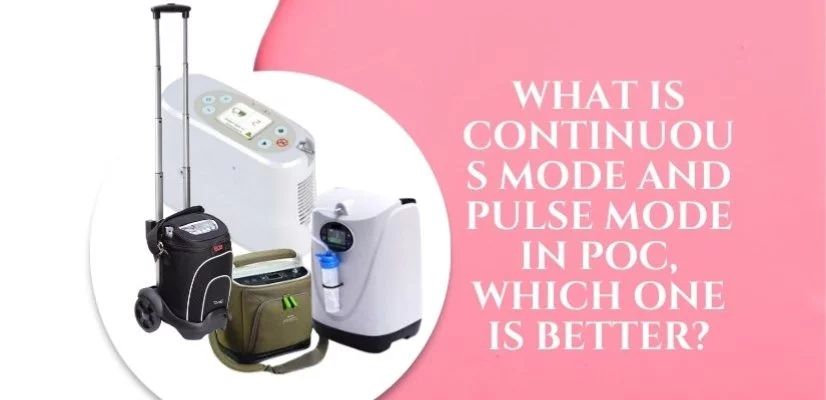Continuous Mode vs Pulse Mode
An oxygen concentrator is a medical device that provides supplemental or extra oxygen to a patient with breathing issues. An oxygen concentrator works by filtering and concentrating oxygen molecules from the ambient air to provide patients with 90% to 95% pure oxygen. In today’s unpredictable time, this medical device is of utmost importance with the pandemic (COVID-19) just off of our heads. The demand for this product skyrocketed in the past 2 years and tons of new manufacturers emerged with this spike in demand.
2 Modes of Oxygen Concentrators
When your doctor first prescribes oxygen, you’ll probably talk about the numerous options available to meet your needs. Finding out if you need a pulse or continuous-flow oxygen machine is one of the first steps in initiating oxygen therapy. Perhaps your doctor has used the terms “pulse” and “continuous flow,” but do you actually know what they mean? What is the relationship between it and the machine’s pulse-dose settings? What exactly is the distinction between the two? Which one is the best fit for you? Let’s look at the differences in more detail below:
Pulse-Flow Oxygen Concentrators
Pulse dose delivery is also known as pulse flow, on-demand, intermittent flow, conserving device, or puffer. With each breath, pulse flow pumps or pulses oxygen into your nasal pathway with a cannula. This means that oxygen is only provided during inhalation, and when you exhale, the oxygen is stored in the device. The oxygen concentrator will automatically change the pulse size and delivery frequency to maintain the appropriate flow rate if the breathing rate increases.
Continuous Mode vs Pulse Mode
Pulse dosage delivery is similar to drinking water through a straw and the distribution is more controlled and tailored to the individual’s needs. In comparison, using a continuous-flow Oxygen Concentrator is like drinking from a water fountain, and the delivery is less controlled. Due to the rest times between each breath, units with pulse flow delivery methods are more energy efficient. Rest times extend the battery life of your device, allowing you to use portable solutions for longer amounts of time. Another advantage of a pulse dosage Oxygen Concentrator is its compact size. Units can be made significantly smaller as a result of the greater efficiency, giving patients more flexibility and movement.
Continuous-Flow Oxygen Concentrators
The most common method of oxygen delivery is continuous flow. Continuous flow is a method of delivering oxygen at a constant and predetermined pace. When compared to a water fountain, continuous flow is the easiest to grasp. When you turn on a water fountain, it produces a continuous stream of water. If the water fountain was running at 1 liter per minute and you drank from it, the chances of you consuming 1 liter of water in a single drink are slim to none. The same is true for a continuous Oxygen Concentrator; due to the constant oxygen delivery, there will be naturally surplus oxygen delivered.
Which one is better for you?
Always start with your doctor when answering this question. While pulse dosage is effective for many people, it is not appropriate for other medical situations. Many doctors will recommend a continuous flow Oxygen Concentrator for nocturnal or nighttime use if you need oxygen at night. Many individuals, however, can still use a pulse dose machine during the day. Because shallow and mouth breathers may not trigger the pulse sensor, doctors prefer continuous flow for sleep. Some machines will warn if no pulse is detected, leading patients to wake up often throughout the night.
If you live a more relaxed lifestyle, an oxygen concentrator with continuous flow is sufficient. Continuous flow delivery is used by all at-home or stationary concentrators. A continuous flow machine may be ideal for you if your activity level is low to moderate and your breathing rate remains generally constant throughout the day. For patients with sleep apnea or other illnesses that require oxygen at night, continuous flow machines are generally a good option. A continuous flow Oxygen Concentrator, as previously said, will not wake you up if you breathe through your mouth or have shallow breathing while sleeping.
Pulse and Continuous flow both
Several companies now offer Oxygen Concentrators with both continuous flow and pulse flow settings as an alternative solution. These devices are portable, versatile, and can be used with sleep apnea equipment at night and on pulse dose during the day to extend battery life.
Disclaimer
The information provided is for general knowledge only. Consult your doctor for personalized advice and treatment. Medikart HealthCare is not liable for any actions taken based on this info.

